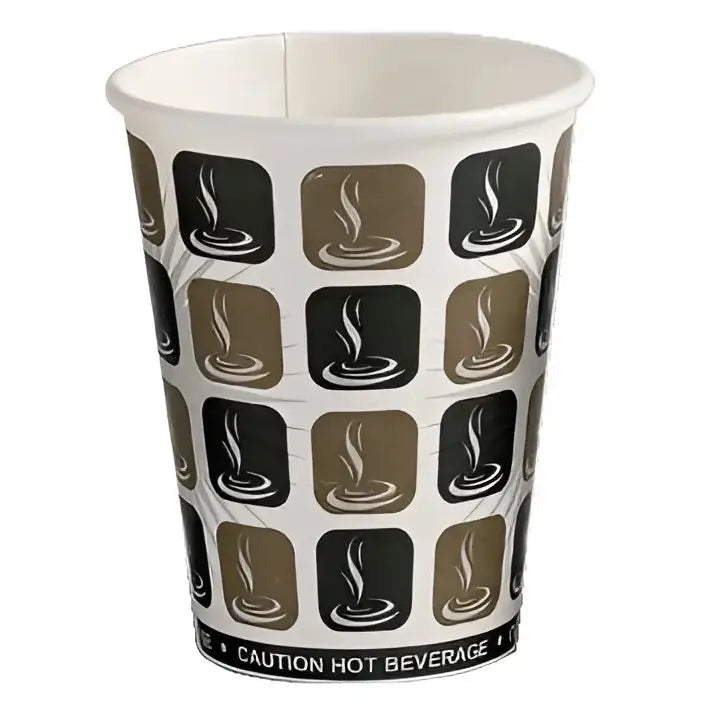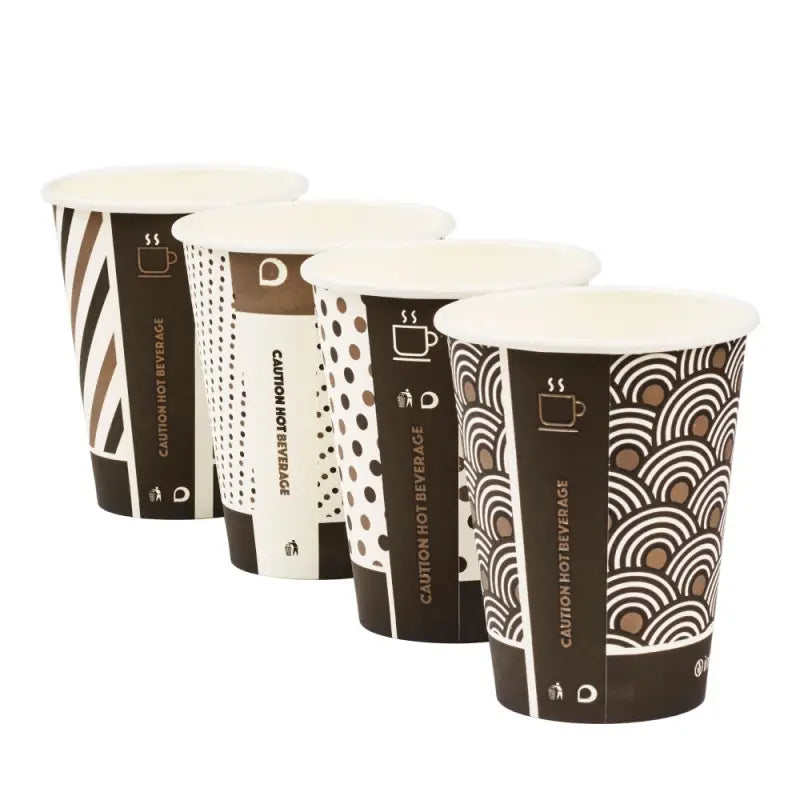Find answers to Deli Supplies Frequently Asked Questions
Our Products
What is Bagasse?
Bagasse is the fibrous byproduct that remains after processing sugarcane and is commonly used as a renewable resource for various applications. Bagasse has gained attention as a valuable material with multiple uses and can be molded into various shapes to create biodegradable products such as disposable plates, cups, and food containers. These products offer an eco-friendly alternative to traditional plastic or Styrofoam containers.
Bagasse can be commercially composted along with any food residue and used as organic matter to enrich soil and improve its structure. However due to lack of local packaging composters and appropriate collection services it can still end up in landfill.
Our take on bagasse is that using this material made from renewable and sustainable sources (plants!) is a positive so if you have no control over where your waste ends up it is better that it was made from renewable sources.
What is PE?
PE or Polyethylene is a widely used thermoplastic polymer. It's known for its versatility, durability, and low cost. PE is classified into several types, including High-Density Polyethylene (HDPE) and Low-Density Polyethylene (LDPE), each with specific properties. HDPE is used in items like bottles, pipes, and containers due to its strength and resistance to chemicals. LDPE is more flexible and used in items like plastic bags and films. Linear Low-Density Polyethylene (LLDPE) combines properties of both. PE's popularity is due to its applications in packaging, consumer goods, agriculture, construction, and more.
PE is recyclable however, the recycling capabilities can vary by region and local recycling facilities. It's important to check with your local recycling guidelines to ensure proper sorting and preparation for PE plastic recycling.
What is PET & rPET?
PET or Polyethylene Terephthalate, is a common thermoplastic polymer used in various products, including plastic bottles, food packaging, textiles, and more. rPET, or recycled PET, refers to PET plastic that has been recycled and processed into new products. rPET helps reduce the demand for new plastic production, conserving resources and energy. It's obtained by collecting used PET items, cleaning and processing them, and then forming them into new products. This recycling process contributes to waste reduction and environmental sustainability, as rPET can be used to create new items, reducing the need for virgin plastic and minimising plastic waste.PET and rPET are one of the most commonly recycled plastics due to its widespread use and well established infrastructure to collect and process this waste.
What do we mean when we say Widely Recyclable?
When we say a product is widely recyclable, we mean the material can be easily processed through common recycling programs, maintains quality through multiple recycling cycles, has low contamination, and has established markets for the recycled material This helps to reduced waste, encourage resource conservation, and lower environmental impact.
What do we mean when we say Recyclable?
When we say a product is "recyclable," it indicates that the item or material has the potential to be collected, processed, and reused in the recycling system. Recyclable items are designed and manufactured to be compatible with existing recycling processes, allowing them to be transformed into new products or materials. However, successful recycling often depends on proper disposal, collection, and sorting practices, as well as the availability of recycling facilities and markets for the recycled material. Not all recyclable items are equally easy to recycle; factors like contamination levels, material composition, and regional recycling capabilities can influence the actual recycling outcome.
What do we mean when we say Biodegradable?
When we say something is "biodegradable," it indicates that the item or substance can naturally break down and decompose into simpler, harmless components over time through the action of microorganisms, such as bacteria, fungi, and other biological processes. Biodegradable materials return to nature without leaving behind lasting waste or causing pollution. However, the rate and extent of biodegradation can vary depending on factors like the material's composition, environmental conditions, and the presence of appropriate microorganisms. It's important to note that while biodegradable materials break down more readily than non-biodegradable ones, the term doesn't necessarily imply a specific timeframe or environmental impact.
What do we mean when we say Compostable?
Compostable means that the item or material is capable of undergoing complete and natural decomposition in a commercial composting environment. Compostable materials break down into non-toxic components, leaving behind no harmful residues. However, successful composting requires specific conditions, including the presence of oxygen, moisture, and microorganisms. Commercial composting facilities provide controlled conditions for quick decomposition. Unlike home composting, these products require specialised processing.
What do we mean when we say Home Compostable?
Home compostable refers to items or materials that are designed to break down in a home composting environment. These items are meant to be added to garden compost bins or piles, where they will decompose naturally alongside other organic matter. Home compostable products are engineered to break down into compost that enriches the soil and can be used for gardening or landscaping. When home composting, it's important to ensure proper composting practices are essential for successful decomposition.
What do we mean when we say Reusable?
These items are intended to be used, cleaned, and used again, reducing the need for single-use packaging. They promote sustainability by minimising waste and conserving resources, offering an environmentally friendly alternative to disposable packaging options. We leave the responsibility to customers to assess that hygiene requirements are met for additional uses.
What do we mean when we say Renewable?
When we say renewable packaging we are referring to packaging materials that are made from renewable resources, such as plants or other materials that can be regrown or replenished relatively quickly. Renewable packaging aims to reduce the reliance on finite resources like fossil fuels and promote more sustainable practices. Examples of renewable packaging materials include paper and cardboard made from sustainably managed forests, bioplastics derived from plant-based sources, and packaging materials made from agricultural waste or byproducts. These materials are designed to have a lower environmental impact compared to packaging made from non-renewable resources.
What do we mean when we say Recycled Materials?
When we say recycled packaging materials, we are referring to packaging that is made from materials that have been previously used and then processed to create new packaging products. Recycled packaging materials are obtained by collecting and recycling items like paper, plastic, glass, or metal from discarded products. These materials are then treated, cleaned, and transformed into new packaging products, reducing the need for virgin raw materials. Using recycled packaging materials helps conserve resources, reduce waste, and minimise the environmental impact associated with producing new packaging from scratch. It's an important step towards sustainable packaging practices.
Why aren't disposable coffee cups widely recyclable yet?
Disposable coffee cups are not easily recyclable due to their complex composition and the challenges they pose to traditional recycling processes. These cups are typically made from a combination of materials, including paper and a thin layer of plastic (usually polyethylene) to make them liquid-resistant. However, this plastic lining prevents effective separation of the paper fibers during recycling. The mixed materials and the potential contamination from beverage residues further complicate recycling efforts. Many recycling facilities lack the specialised equipment and processes needed to handle these complex cups. As a result, the recycling rate for disposable coffee cups remains low. New "plastic free" products on the market still look, act and feel like traditional disposable coffee cups and can not easily be separated once they are collected by local authorities and waste management centres meaning they will probably still end their life in landfill.
What is PLA?
PLA or Polylactic Acid, which is a biodegradable and bioactive thermoplastic derived from renewable resources like corn starch or sugarcane. It's considered a more environmentally friendly alternative to traditional plastics derived from fossil fuels. PLA is often used in packaging and disposable tableware due to its biocompatibility and relatively low environmental impact. It has gained attention for its potential to reduce plastic waste and lower the carbon footprint of various products, although its biodegradability requires specific composting conditions to fully break down.Much like bagasse PLA can be commercially composted along with any food residue and used as organic matter to enrich soil and improve its structure. However due to lack of local packaging composters and appropriate collection services it can still end up in landfill.Our take on PLA is that using this material made from renewable and sustainable sources (plants!) is a positive so if you have no control over where your waste ends up it is better that it was made from renewable sources.
Delivery & Returns
Why do we charge carriage?
We charge carriage to keep our prices as low as possible. The actual cost to us is usually more than the shipping paid by customers.
Why do we charge more for Northern Ireland, Channel Islands, Scottish Highlands, Scottish Islands & Isle Of Man?
We charge more for Northern Ireland, Channel Islands, Scottish Highlands, Scottish Islands & Isle Of Man for the simple reason that it costs us more to ship to these locations.
Which Couriers do we use?
We use multiple couriers to get customers' orders to their destinations.For the majority of consignments, we use Royal Mail, UK Mail (DHL), DPD Local, part of the DPD group and UPS.All 4 are well known for their excellent service and fast delivery.
Our business does not open until the afternoon, can I specify an afternoon delivery?
Unfortunately not. If this is the case, we suggest getting the delivery sent to another address where someone will be able to sign for it between the hours of 8am and 8pm.
Where is my delivery?
Tracking information should be provided when your order is processed. If your delivery doesn't arrive on the day specified by the courier (up to 8pm) please log on to the courier website and see if the tracking has been updated. If the tracking indicates that your delivery has not been rescheduled please let us know and we will investigate further.
Can I arrange a Saturday Delivery?
You can arrange a Saturday delivery by calling us and placing your order over the telephone.The cost of Saturday deliveries will vary depending on the weight of your order and delivery address. A Saturday delivery will be a lot more expensive than a standard next working day delivery.
Do you ship internationally?
No, at this time we only ship orders to the UK. We can however ship to your UK freight forwarder.
What is the cut off time for next day deliveries?
Orders must be with us by 1pm to allow us to process your order ready for collection the same day.
If I pay for a next day delivery on Friday will it arrive on Saturday?
No, next day deliveries are different to a Saturday delivery and would be delivered the following working day.
What is a working day?
Our couriers define working days as Monday to Friday excluding bank holidays.
Can I return unwanted goods?
Yes, you can return unwanted goods within 14 days of receiving them providing the products you would like to return are unused, still in original packaging and in a resellable condition.
How do I return an unwanted item?
Contact us and let us know you would like to return an item and we will give you a return number.You will need to arrange your own courier to return your unwanted items.
Who pays for returns?
It is the customers responsibility to pay for the return of unwanted goods.




